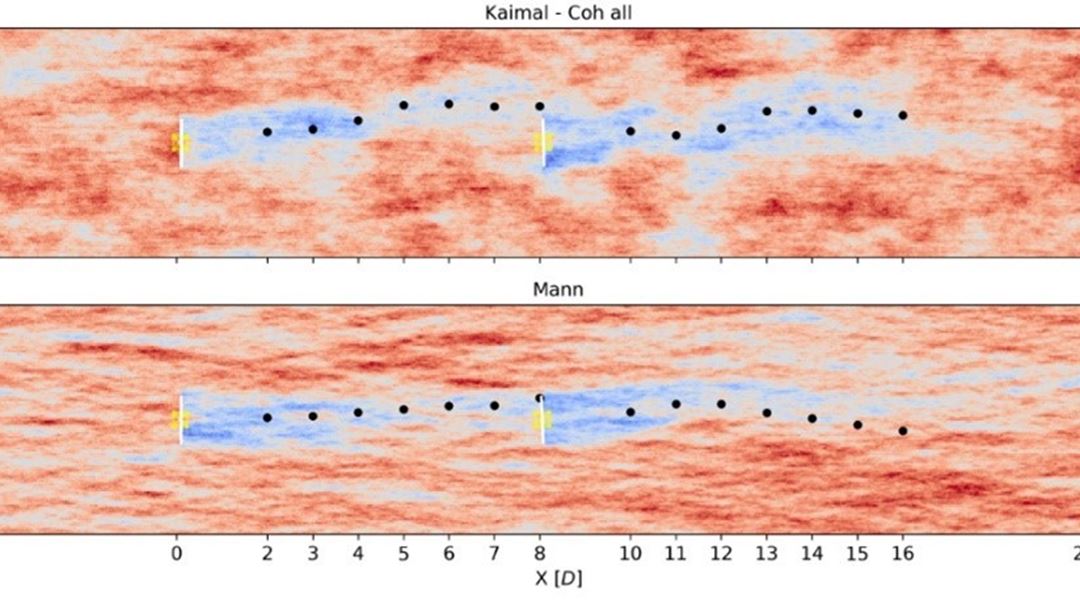WP3 Wind field modelling

Due to their resonant periods for rigid body motions on the order of 50-200 s, the global motions of floating wind turbines are particularly sensitive to low-frequency variations in the wind loads. There are, however, significant uncertainties in the modelling of the incoming wind field, especially for increasingly large rotor diameters and for floating wind turbines in a farm.
The wind turbine design standards recommend the use of two wind models. Both models consider neutral atmospheric conditions, and neither accounts for the effects of neighboring wind turbines in a farm.
Unstable, rather than neutral, atmospheric conditions typically dominate offshore (especially at lower wind speeds), as shown in the left figure below, and thus atmospheric stability should be considered. Furthermore, dynamic wake meandering (DWM) effects may include low-frequency changes in the wind speed seen by a floating wind turbine.
The aim of this work package is to study the consequences of wake meandering (figure, right), together with non-neutral atmospheric stability, on the global motions and, especially, on loads on the mooring system. Numerical simulation tools are combined with wind measurements from the FINO-1 platform. The work package will contribute to better understanding of critical design conditions for mooring systems for floating wind turbines.



